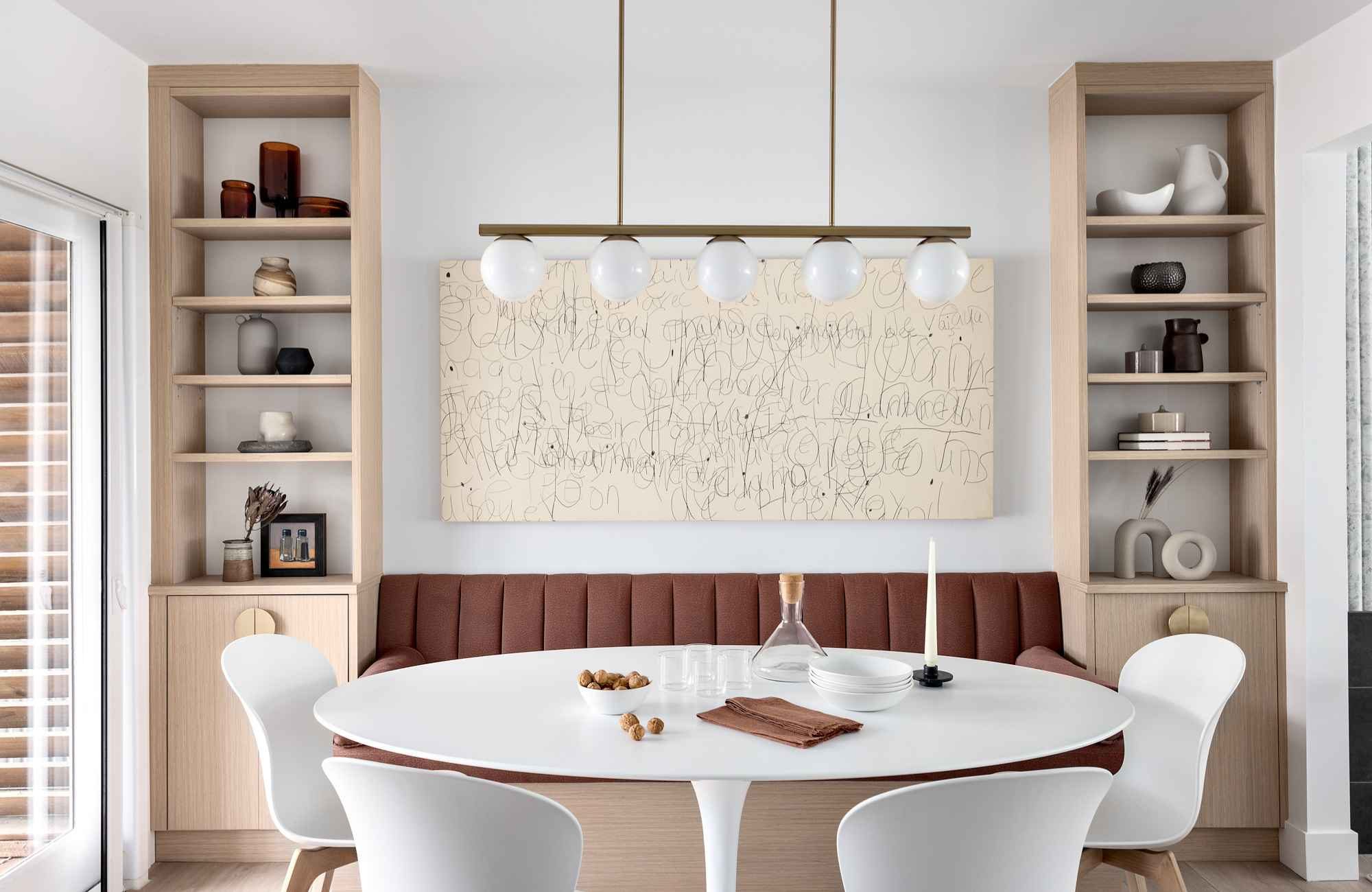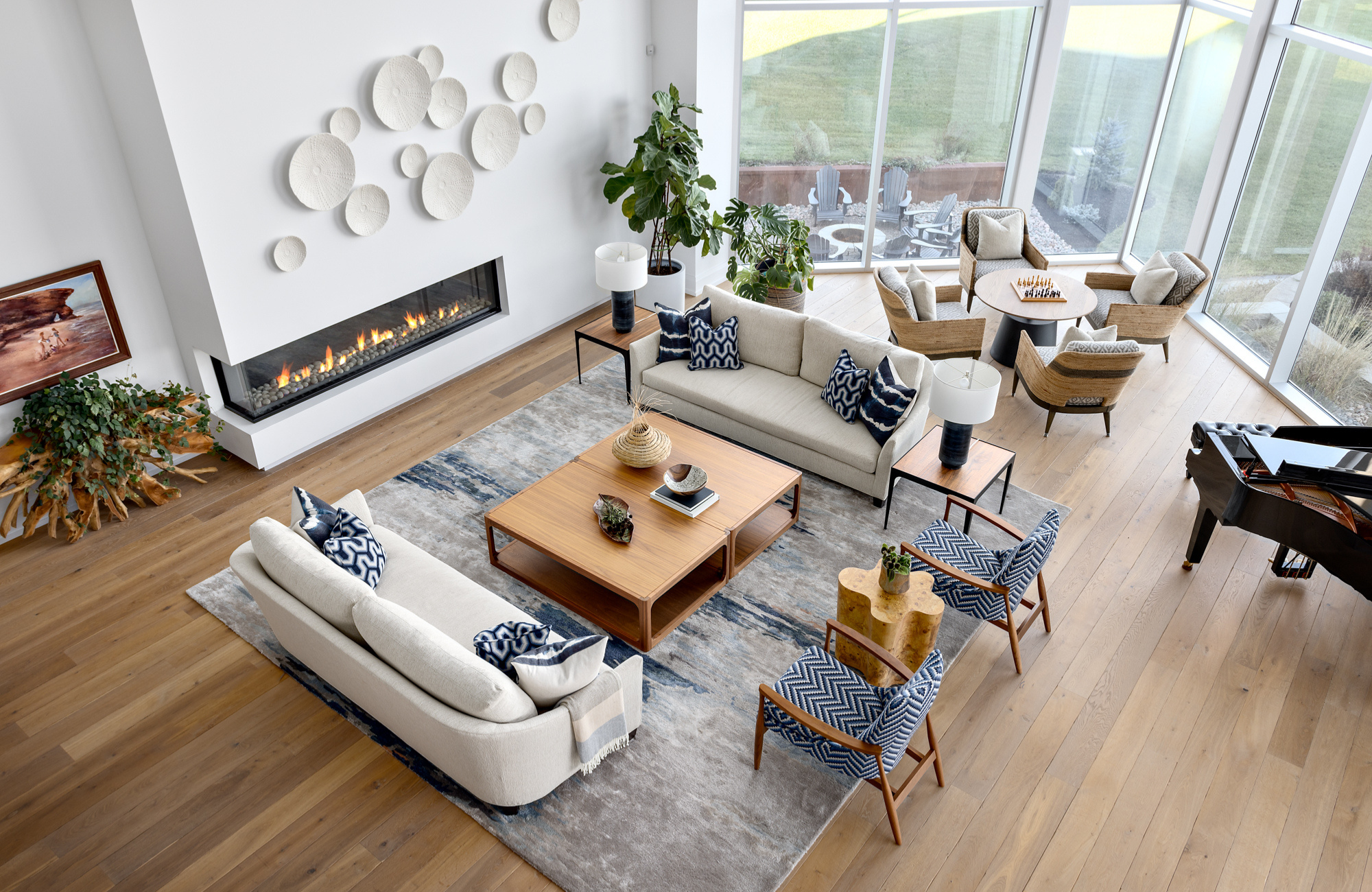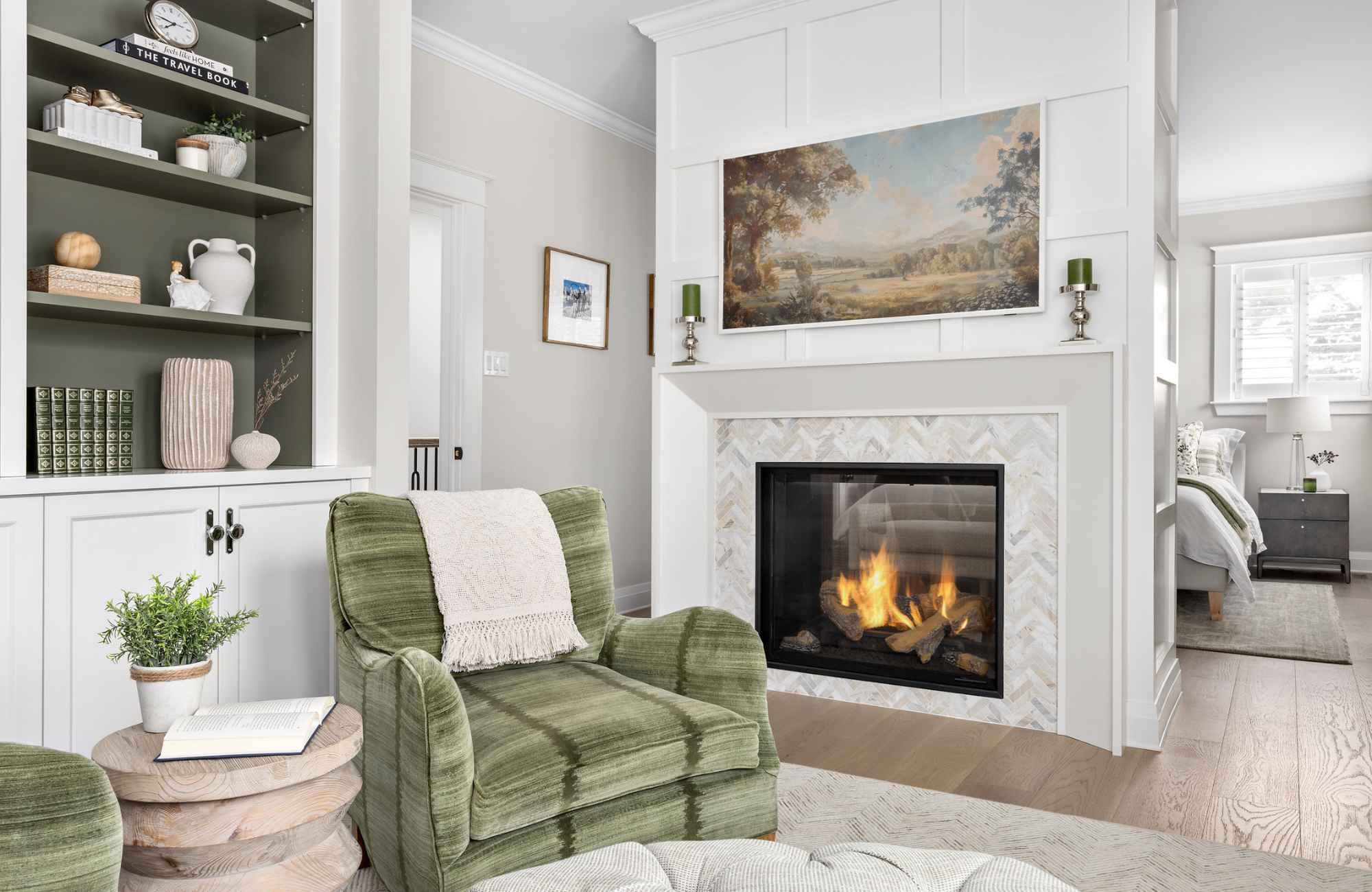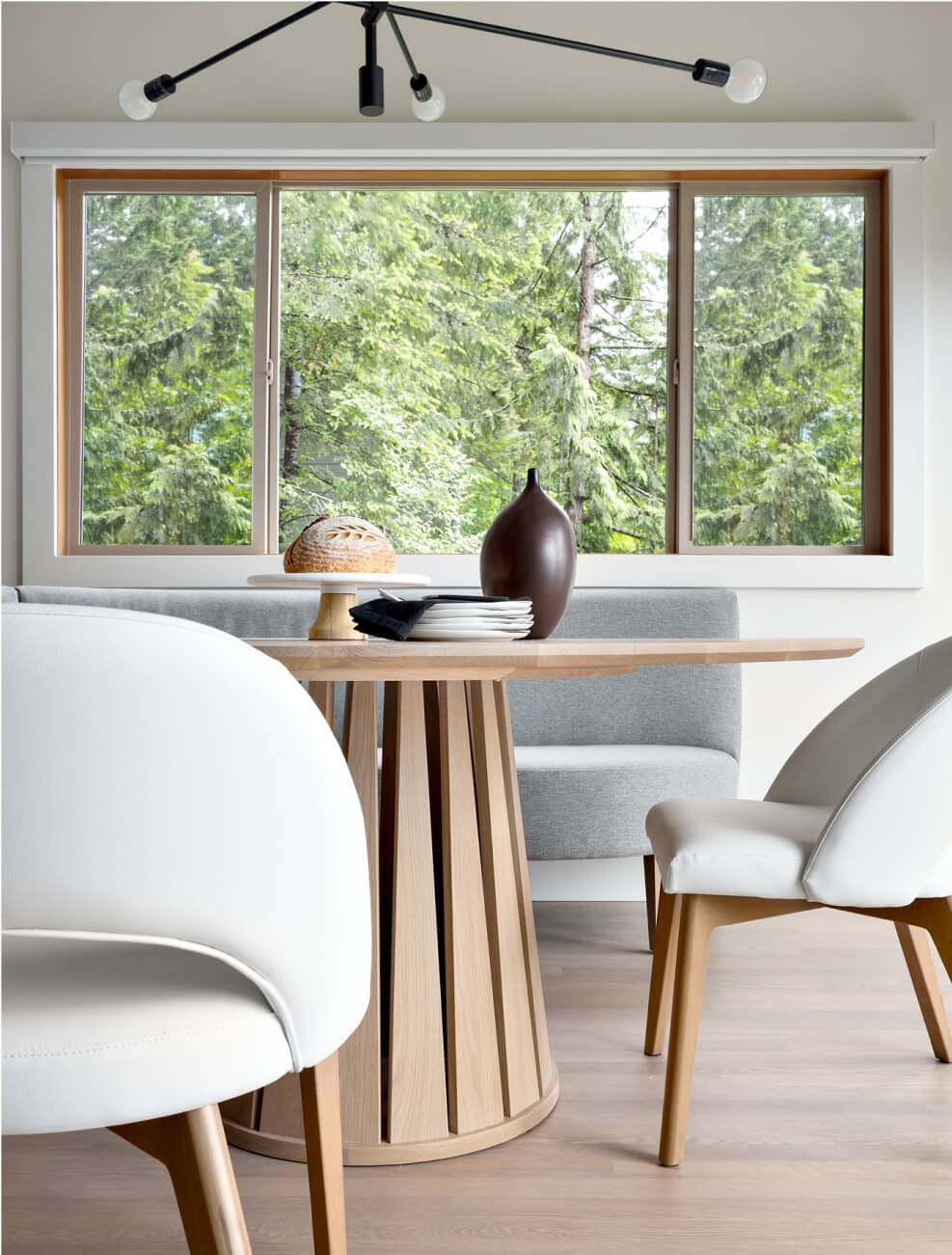
From photography and drawings to textiles and three-dimensional installations, the artwork you choose to display in your home has the potential to tell your story, reflect your style, and create a connection to the places and people you value most.
In our interior decorating projects, we treat artwork not as an afterthought, but as an essential part of the overall vision for a space.
Whether you already have an extensive collection or are just beginning to explore the idea of acquiring art, we work closely with you to ensure that each piece is meaningful, intentional, and thoughtfully placed within your home. Here is how we approach the process:
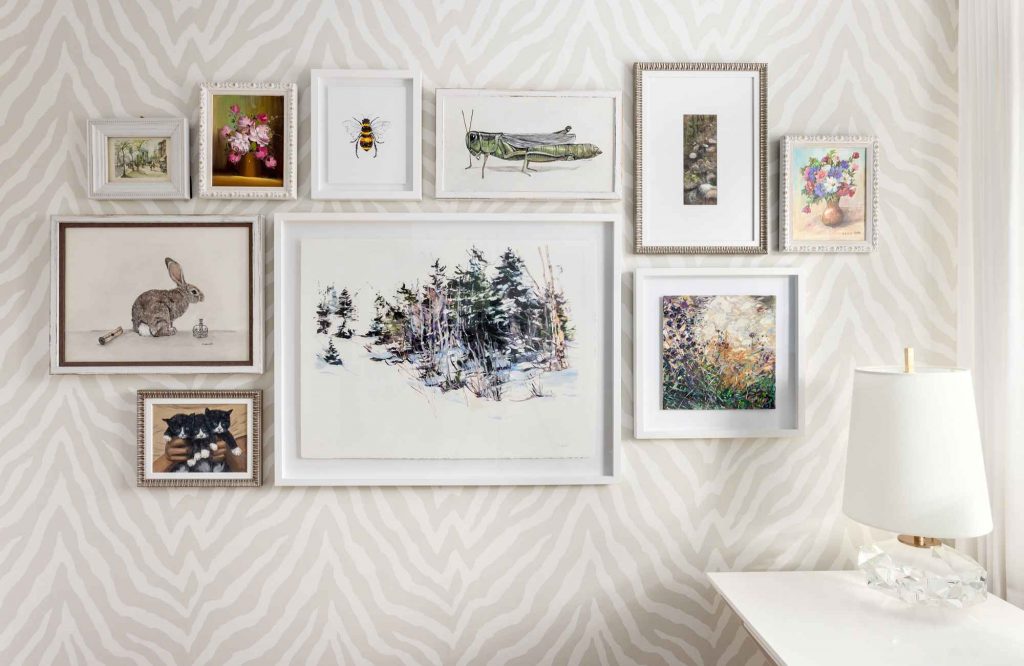
Step 1. Start with what you already have
The first step is to take inventory and look at what you already own. This might be family photos, cherished heirloom furnishings, or statement artwork that holds personal meaning. Oftentimes our clients come to us with pieces that carry memories, mark milestones, or simply speak to them on an emotional level. These items often become the starting point for the design. They might inspire the colour palette, set the tone for the textures and finishes, or influence the overall mood of the room.
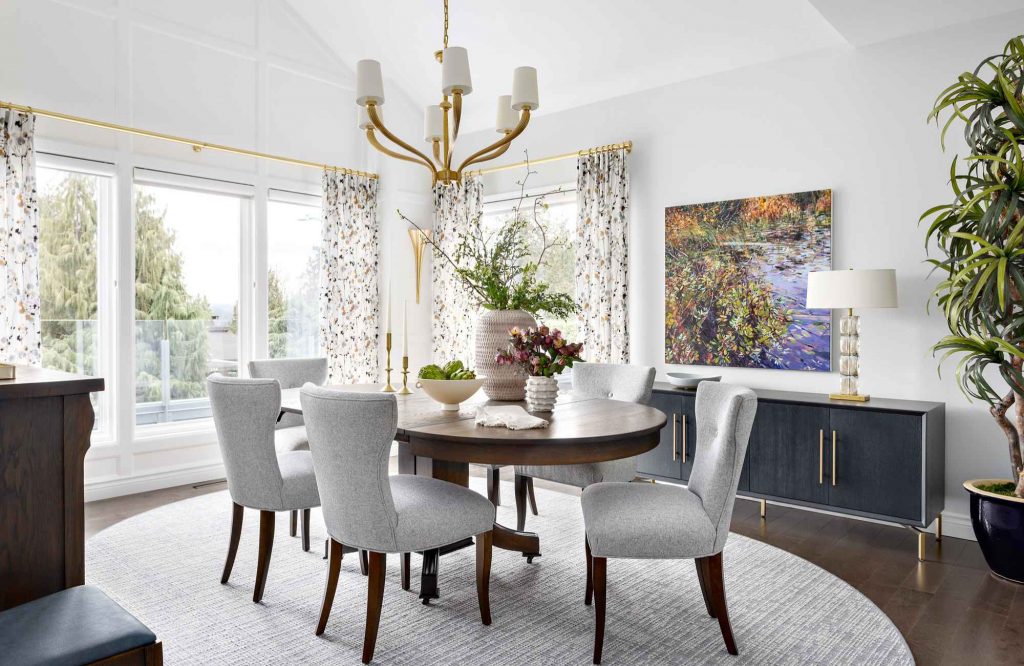
In our Traditional Dollarton Project, pictured above, the dining room is brought to life through a vibrant nature-inspired painting from local Vancouver artist Krista Johnson. This artwork establishes the palette and mood for the surrounding design elements. Alongside it, the family’s antique dining table and sideboard bring a sense of history and continuity. Together, the art and furnishings illustrate how old and new can work together to create a home that feels both meaningful and fresh.
Step 2. Identify What’s Missing
Once we know which pieces will stay, we look at the room with fresh eyes to see what the space might still need. Is there an open wall that feels too bare? Does the room lack texture or variation in scale? Sometimes the answer is sourcing a new piece to balance proportions, other times it is about adding depth, colour, or material interest to complete the story of the space.
When we source new pieces, we always begin locally. We work with Vancouver-based galleries and Canadian makers to find art that aligns with our clients’ taste and the aesthetic of their home. This not only supports local artists and our economy, but also creates a sense of place that feels authentic.
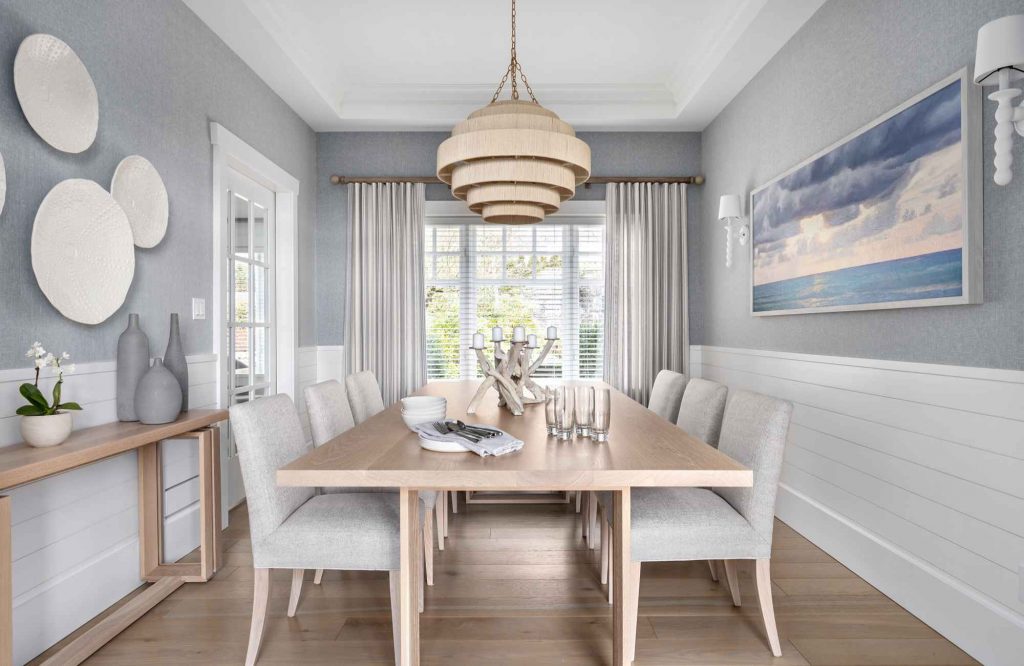
In this West Vancouver coastal-inspired dining room (pictured above), a panoramic seascape painting balances the scale of a long wall and sets a serene colour story for the space. Its horizon line echoes the natural textures found in both the shiplap and subtle grasscloth wallpaper, while the placement grounds the space and brings the design together.
That same sense of calm extends just beyond the French doors into the adjoining home office…
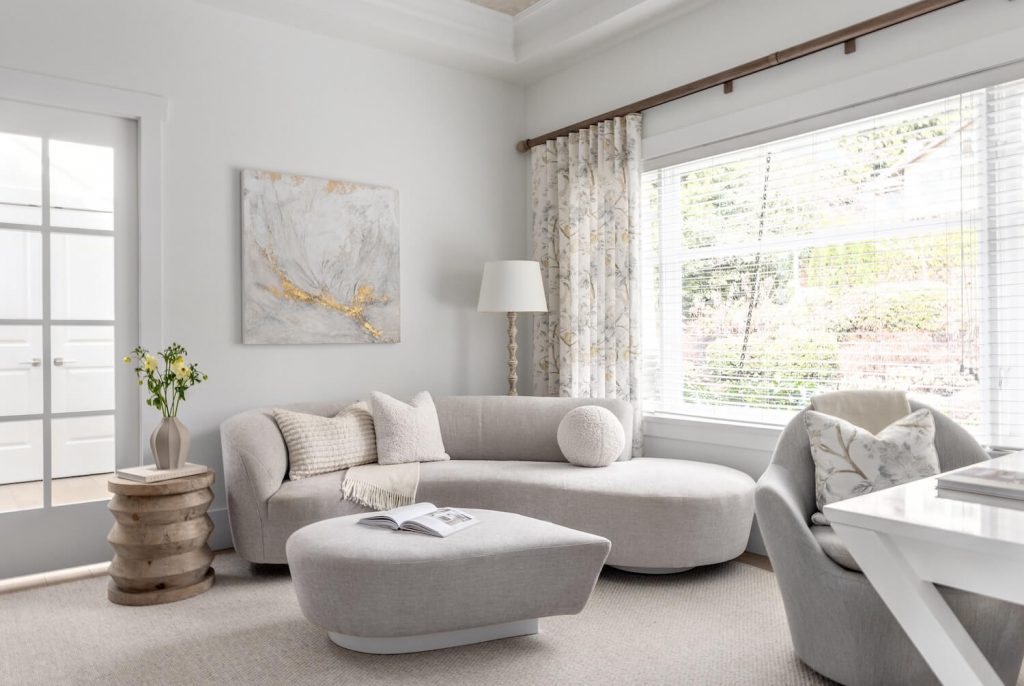
Here, with smooth walls as the backdrop, a glimmering abstract painting by North Vancouver artist Donna Giraud introduces depth, dimension, and texture. Gold accents in the artwork are mirrored in the drapery and unify the room while enhancing its contemporary character.
Together, these two spaces show how thoughtfully selected pieces can both complete a room and create continuity across adjoining areas.
Step 3. Select Pieces That Work Together
Integrating new artwork with items you already own requires a balance of proportion, colour, and style. In some cases, this may involve updating frames to create cohesion. Other times, it’s as simple as introducing a unifying thread, such as a shared palette or a consistent frame colour across rooms. Tactile qualities matter just as much as visual ones. Pairing a painting with a textile, or placing a ceramic piece beside a photograph, brings dimension and keeps the eye moving through the space.
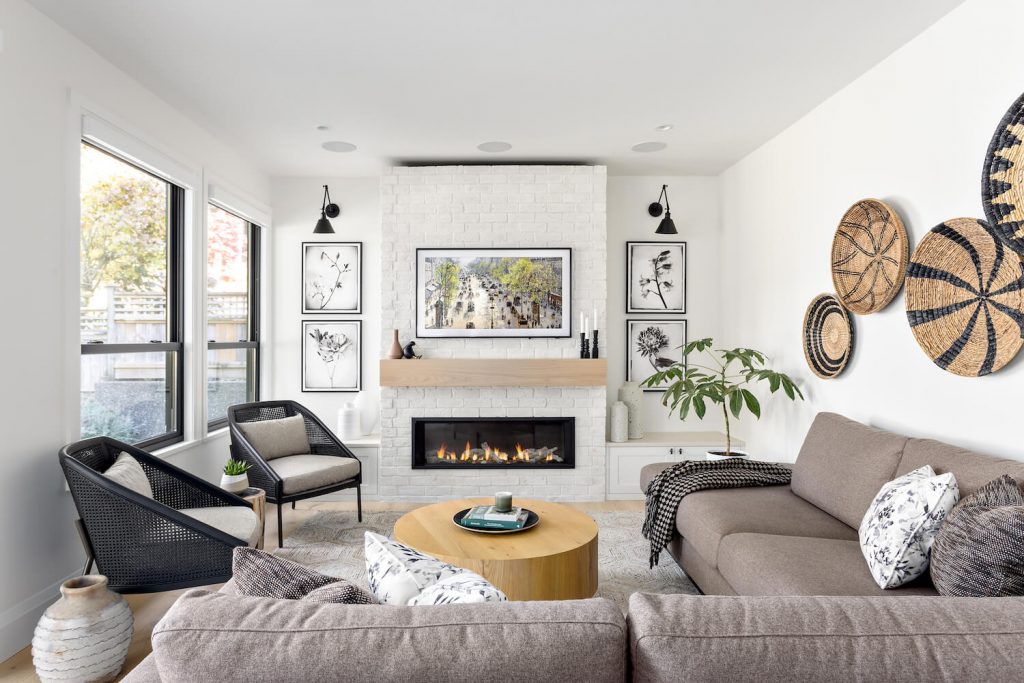
In our Larkhall Crescent Project, pictured above, grayscale botanical photographs by local artist Heather Johnston echo the organic nature of the woven wall hangings, while contrasting textures add interest. Black accents in both the frames and baskets tie everything together, striking a balance between simplicity and warmth.
Designer Tip: Galleries are often happy to bring pieces to your home so you can see them in context. Trust your instincts. If you love a piece and it works within your space, it is the right choice. Equally important, do not hesitate to say “no” if something does not feel right.
Step 4. Placement with Purpose
Artwork does not need to be reserved for the main living areas. We love incorporating art into every room of the home. A small painting in the powder room? Yes! Thoughtful placement can infuse personality and delight to even the most unexpected corners — from sculptures displayed in a hallway to paintings tucked in the walk-in closet. These touches create moments of joy in the spaces you pass through every day. Our PEI Project beautifully illustrates this idea.
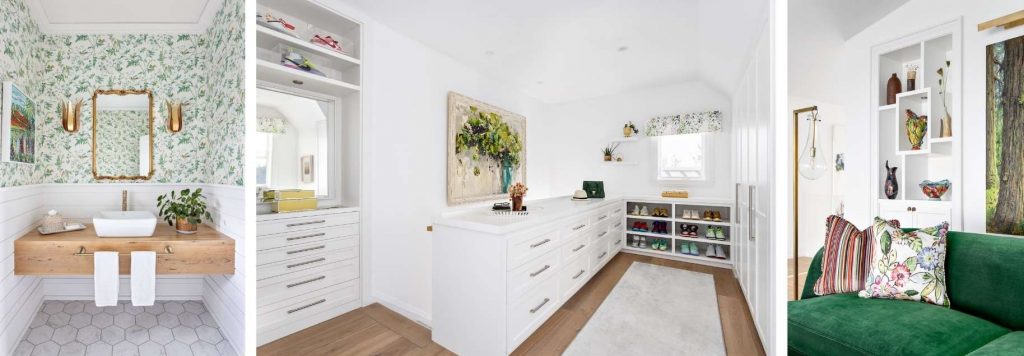
From a jewel-box powder room with a locally inspired farm painting, to a colourful painting displayed in our clients’ incredible walk-in closet, to a mezzanine that proudly showcases collected glass and ceramics from their travels, this home uses art to reflect nature, beauty, and personal story at every turn.
Of course, practical considerations matter too. Works on paper or moisture-sensitive mediums are best kept out of high-humidity areas like bathrooms, while fragile ceramics and sculptures should be positioned safely out of reach of pets and children.
Step 5. Collaborate with a Designer
Incorporating art into a home is a collaborative process. We guide our clients in selecting, refining, and arranging pieces so that they feel like a natural extension of the space. Ultimately, the most important factor is that each piece of artwork resonates with you and infuses your home with personality.
Whether it is an heirloom, a piece from a local gallery, or something discovered while travelling, artwork should bring a sense of connection and enjoyment every time you see it.
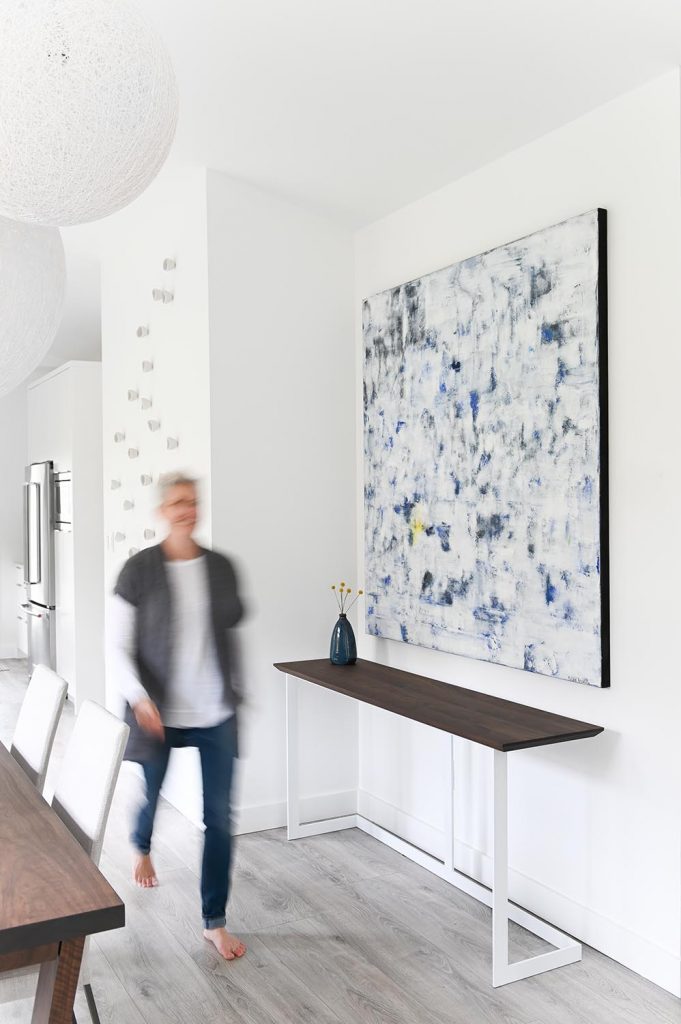
Key Takeaways for Incorporating Artwork into Your Home
- Start with what you have. Use existing artwork you love as a foundation for your design, drawing inspiration from its colours, textures, and mood.
- Identify what is missing. Look for opportunities to enhance your space with new pieces — we often source from Vancouver-based galleries and Canadian makers to support local talent and create a sense of place.
- Select pieces that work together. Pay attention to scale, proportion, and framing, and mix mediums to add depth and interest.
- Place artwork with purpose. Incorporate art into every room of your home, including unexpected spaces like powder rooms, hallways, and laundry rooms, while keeping practical considerations in mind.
- Work with a designer. An experienced interior decorator can help you curate, source, and place artwork so it feels like a natural extension of your home and personal style.
- Additional Tip: When visiting a gallery, bring a photo of the wall you’re looking to fill, along with images of the surrounding furniture, finishes, and lighting. Having that visual context makes it much easier for the gallery staff to recommend options that will fit.
As our client, you benefit from a design process that thoughtfully incorporates artwork into your home, ensuring each piece feels intentional and connected to your space. When you are ready to begin your home decorating project, I invite you to reach out to us here.
Yours,
Lori


